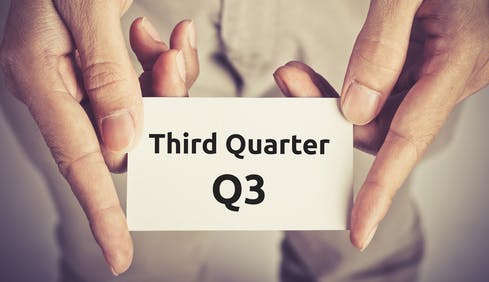After a staggeringly low 21 I-526 receipts in Q2 2020 (Jan-Mar.), the Q3 (Apr.-June) numbers rose to 40 — still a fraction of what they used to be. Of the 922 I-526 petitions adjudicated, a shocking 346 were denied. I-829 processing remains strong with 739 receipts and just 23 denials. EB-5 expert Suzanne Lazicki sees a host of reasons for the processing slowdown but remains hopeful that future productivity will improve.
I-526 new receipts just a tiny fraction of what we’ve seen recently
A cursory look at the latest USCIS processing numbers might instill some confidence: I-526 receipts in (FY Q3 2020) rose 90% — but a quick glance at some context will suppress any enthusiasm that a rebound is yet underway: 4,264 receipts occurred in (FY Q1 2020); while this number was hyper inflated by investors trying to beat the hike in investment amounts, the lowest number of I-526 receipts in one quarter since 2016 was 580 (FY Q2 2019). Quarterly I-526 receipt numbers have more often than not eclipsed the 1,000 threshold the past few years.As a point of comparison, EB-5 business plan writer and processing expert Suzanne Lazicki notes that the 2020 fiscal year receipt numbers of just 21 and 40 over the second and third quarters this year was just 2% of the average I-526 receipts from 2013 to 2019. That precipitous decline in new receipts is both staggering and concerning.
EB-5 I-526 processing numbers consistent with Q2, but denials are way up
When we look at the actual number of I-526 petitions processed, 922 applications were adjudicated in FY Q3 2020; marginally higher than the 904 processed in FY Q2. What has changed, however, is that a whopping 346 (over 37%) of those FY Q3 adjudications resulted in denials; way up from the 21% denial rate in FY Q2.
I-829 processing remains positive
On the positive side, I-829 processing numbers are improved from the previous quarter: FY Q3 2020 saw 739 new receipts with 748 petitions processed and only 23 denied (97% approval rate). In comparison, FY Q2 2020 had 604 I-829 receipts with 787 petitions processed, and 57 denials (approval rate of almost 93%)Lazicki states that it is “clear that IPO has reallocated resources away” from I-526 processing and toward I-829 processing
Why I-526 receipts are so low
Lazicki points to various factors contributing to what she aptly calls the “decimated demand” for EB-5 in 2020: a lack of commitment to efficient processing, COVID-19, and oversubscription — but she believes the biggest factor is the steep hike in investment amounts that came into effect November 21, 2019.Industry stakeholders didn’t have a consensus opinion about what that change would do to the industry, with some thinking it would be the virtual end of the program and others thinking a period of time was needed to adjust to the “sticker shock” of the first increase in the regional center investment levels since the program began in 1992. The worldwide health and economic crisis certainly hasn’t helped and muddies the picture as to what demand would look like in an otherwise normal year.
What current EB-5 I-526 ||abc|| I-829 processing rates mean
Lazicki postulates that if current processing rates were to remain static, it would take 4.3 years to process the full number of pending I-526 petitions, and 3.5 years to process the pending I-829 petitions. She tells us that the current processing efficiency (or lack thereof) is seven times slower than Congress intended. In spite of this, she does offer an optimistic view for the future: ”I trust productivity will be improved and future processing times will not actually be that long.”
What the future of EB-5 needs
A near stoppage in incoming I-526 petitions can’t be healthy for the program.Lazicki succinctly frames the problem and solution: “If the United States actually wants billions of dollars in EB-5 investment, not to mention the 10-plus new jobs required to come with each investment, EB-5 program policy reforms are needed.”With a new, more immigration-friendly administration about to lead the way, EB-5 stakeholders and immigrants should have more hope then they’ve had in years that reform may still come.Read Lazicki’s blog “FY2020 Q3 Processing Data”





